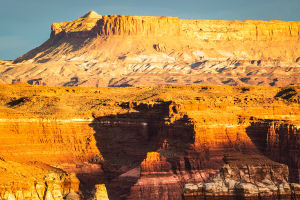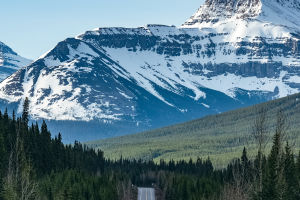
Welcome Lykkers! For anyone enchanted by the beauty of forests and greenery, learning how to photograph trees can be an exciting and rewarding pursuit.
Trees, as a subject, may seem familiar, yet they can be transformed into striking visual statements when framed under the right light and atmospheric conditions.
This guide offers useful insights for capturing trees throughout the year, selecting the best lighting, and choosing the right equipment for powerful imagery.
The Power of Light in Forest Photography
What sets a tree photograph apart isn't just the subject—it’s the light. Unique lighting conditions, such as a low sun peeking through mountains or rays breaking through clouds, can highlight a single tree or a small cluster in a dramatic way.
These natural spotlights turn a simple woodland into a stage of visual storytelling. Fog and shifting mists often reshape the outline of wooded ridges, creating an evolving canvas. Even seemingly gloomy weather—rain, snow, or wind—adds a touch of the unexpected to the scene. Moving elements like swaying branches add motion and mood to the frame.
Seasons in the Forest
Each season presents fresh opportunities. In Spring, vibrant green tones take over the forest. Young cones and budding branches offer signs of renewal and are perfect for close-up shots. These scenes, often decorated with early blooms, reflect the season’s energy and transformation.
During Summer, longer daylight hours and snow-free trails provide easier access to locations, including high-altitude edges where the forest gives way to open skies. Photographers can explore more open compositions, avoiding the denser parts of the woods.
Autumn arrives with a rich palette of yellow, orange, brown, and red. This burst of color, combined with low, harsh light, creates deep contrasts and well-defined shapes. The addition of light mist or thin fog enhances depth and mood.
In Winter, snow-covered trees transform into sculptures of frost and silence. Even bare branches have charm, especially when lit by the season’s soft, angled light. The long shadows created during this time help structure the frame with leading lines and subtle geometry.
The Best Moments to Shoot
As with broader landscape photography, early mornings and late afternoons offer the best light. During these hours, the sun sits low and casts golden rays that enhance textures and colors. In Autumn and Winter, however, the light often remains soft throughout the day, allowing flexibility in timing.
It’s also important to understand how light behaves in mountainous or narrow valleys. In some areas, sunlight might not reach the forest floor for months, which can limit certain shots. Nonetheless, cloudy skies or misty conditions create atmospheric images that are often overlooked but incredibly powerful.
Choosing the Right Gear
Different lenses bring out different qualities. Telephoto lenses help isolate trees and compress background elements, which makes trees seem closer together than they are.
This effect can emphasize the rhythm and repetition within a grove. A wide-angle lens, on the other hand, expands space, exaggerates foreground elements, and pulls the viewer into the scene. Creative angles, such as shooting upward from a low position, can add drama and interest.
Tripods play a crucial role, particularly for fine-tuning composition and keeping images sharp during longer exposures. They allow for careful adjustments and invite a more thoughtful approach to framing. When using powerful zoom lenses, a sturdy tripod is especially useful to minimize movement.
A macro lens also deserves attention. These are ideal for capturing detailed textures, like bark, needles, or leaves, especially when light grazes the surface from the side, bringing out depth and surface detail.
Exposure and Composition Tips
When photographing trees, exposure often needs special attention due to strong differences in brightness between the subject and background. Using spot metering or center-weighted modes helps focus the camera’s attention on the well-lit parts of the image.
To achieve greater depth of field and maintain sharpness from foreground to background, small apertures like f/11 or f/16 are ideal. For more isolated subjects or to create background blur, wide apertures such as f/2.8 or f/4 can be used, especially with longer lenses.
A polarizing filter can enhance colors by cutting through reflections on foliage and intensifying saturation—an effect not easily replicated during editing.
Wrapping Up the Journey Through the Trees
From fresh Spring shoots to snow-laden Winter branches, trees offer limitless creative potential throughout the year. Early mornings and shifting weather patterns often hold the key to the most dramatic and memorable photographs. With the right light, thoughtful framing, and careful selection of equipment, any forest or grove can be transformed into a masterpiece.


